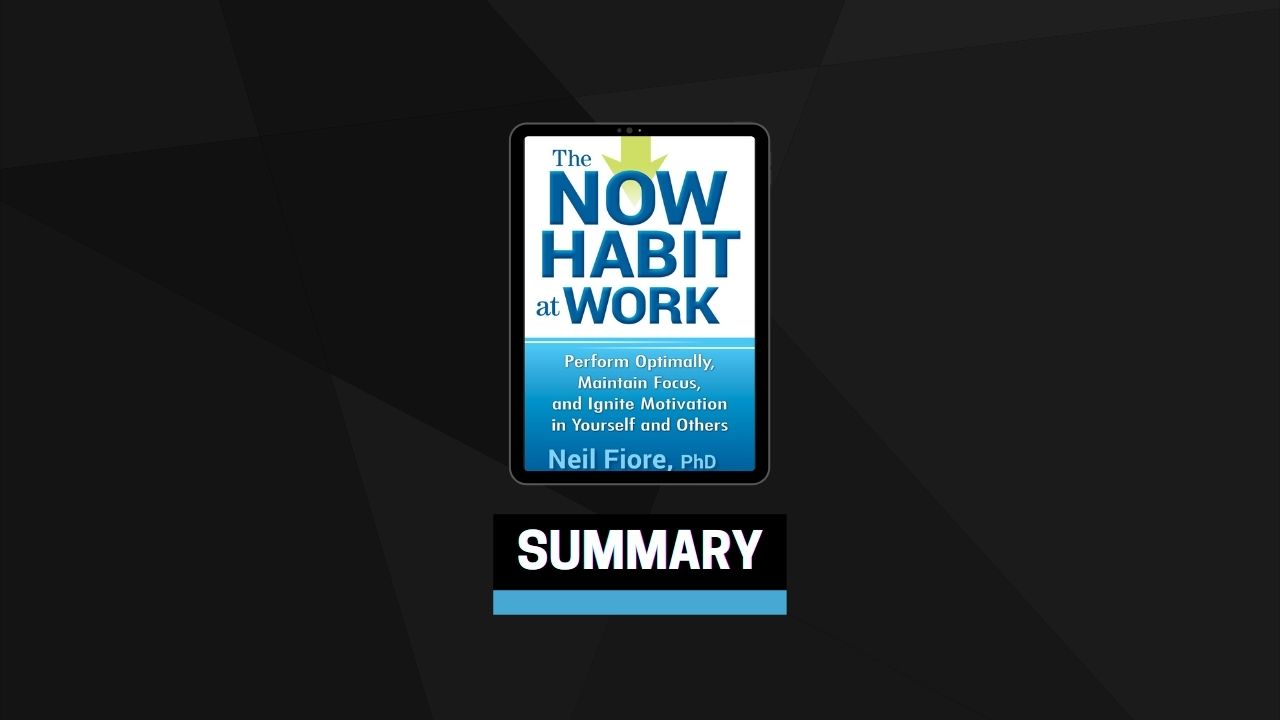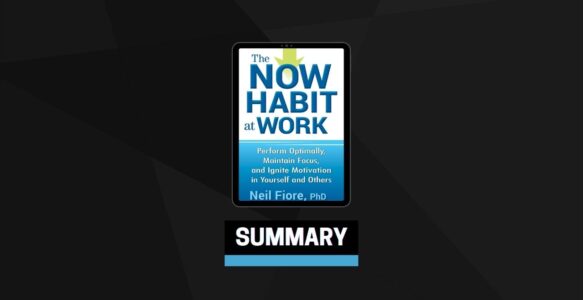I know you’re busy, so let me start by giving away the essential secrets for performing optimally at work. Here are seven basic principles for working efficiently while minimizing distracting and destructive habits.
- Shift from your current habit to corrective action.
- Shift from struggle to ease: the law of reverse effort.
- Shift from ego-focus to task-focus.
- Shift from “I have to finish” to “I choose to start.”
- Shift from “finish an overwhelming 1,500-hour project” to “start for 15 minutes.”
- Shift from the arrogant, lonely struggle of your separated conscious mind to connect with your larger brain and subconscious genius.
- Shift from your default or favorite reaction to choosing to act in a way that is congruent with your higher values and current goals.
Principle #1. Shift from your current habit to corrective action.
The fastest way to change is to link your current behavior to corrective action. In many cases, this can mean doing the opposite of what you’re doing now.
Avoid wasting time criticizing what you’ve done wrong. This only adds emotional trauma to an already confused mental and physical state. Instead, point yourself toward the correct behavior. To be an effective manager of yourself and others replace “Why did you spill the milk?” with “How do we clean it up?”
Give yourself corrective actions directing your attention to what you can do now. You’ll be problem-solving and feeling effective within 5 seconds. Now that’s effective time management!
Principle #2. Shift from struggle to ease: the law of reverse effort.
Like many wise principles, this one seems like a no-brainer. But when we think we’re fighting to just survive, we tend to repeat what we’ve done in the past.
If you’re struggling in life, you’re going in the wrong direction. To free yourself, you have to go in the opposite direction—do what is counterintuitive, like facing down the ski slope to gain control over your skis. Stop struggling, push your fingers into the tube, it will loosen, and you’ll be free. This is the law of reverse effort.
In what ways do you struggle unnecessarily and find that you are repeatedly frustrated? Yet you continue to struggle and stay stuck. How will you let go of your struggle, change direction, and free yourself?
Principle #3. Shift from ego-focus to task-focus.
One of the fastest ways to increase productivity is to shift in one breath, like a karate shout, to a task-oriented focus.
Categorize your thoughts as belonging in one of two boxes: Box #1 is for thoughts about the past, the future, and what’s wrong with you. Box #2 is for thoughts about working on the task.
Students trained to shift rapidly from ego-oriented thoughts, Box #1, to “What do I know now about this question?” —Box #2—significantly improved their scores on SAT, LSAT, and GRE exams. Take any part of ego-oriented thoughts—self-criticism, psychoanalysis, or thoughts about what you should’ve done in the past or what may happen in the future—and link it to what you can do and what you do know now.
You’ll discover that you significantly increase your productivity. As a side benefit, you’ll also lessen feelings of depression and anxiety because you’re releasing pent-up energies and worries into effective action, giving your brain its own natural serotonin, that feel-good hormone in antidepressants.
Principle #4. Shift from “I have to finish” to “I choose to start.”
Ineffective managers tell their workers that they have to do something they don’t want to do, thereby evoking resistance and rebellion. “You have to” means “you don’t want to, but I’m forcing you to do it anyway” and “if you don’t do it, something awful and painful will happen.”
It doesn’t take a genius to see that “you have to” is counterproductive and self-sabotaging. It communicates that the workers—in this case, your mind and body—should resist and rebel against something they don’t want to do. Yet we continue to speak to ourselves, our children, and our employees in this absurd, self-sabotaging language.
If you repeat, “I have to finish all this stuff” to yourself a dozen times an hour, you’ll hypnotize yourself into fatigue, distractions, depression, and procrastination as ways of passively resisting a victim role. For every child saying, “But I don’t want to,” there’s a parent, teacher, or boss saying, “You have to.”
Principle #5. Shift from “finish an overwhelming 1,500-hour project” to “start for 15 minutes.”
As an effective self-manager of your body and mind, you never tell the workers to finish a task that takes more than a few hours to complete. Your workers must know when, where, and on what to start and when they will be paid and rewarded.
Note that you don’t have to keep reminding yourself: “You have to finish.” The last time you start is when you’ll finish. You don’t want to confuse yourself or anyone else by telling them they have to jump into the imaginary future to get to a future deadline. You’ll only create anxiety—energy that is stuck trying to solve a problem in the imaginary past or future that doesn’t exist except in the virtual reality your mind creates
Focus your workers on a near deadline of 15 to 30 uninterrupted minutes that is enough to break through inertia and give you a procrastination inoculation shot. Short time frames compete better with all the distractions in your life and allow you to use breaks as rewards to stretch, clear out some papers, or check e-mail and phone messages.
Principle #6. Shift from the arrogant, lonely struggle of your separated conscious mind to connect with your larger brain and subconscious genius.
One of the most effective ways of doubling your productivity while reducing stress is to access your subconscious genius or night shift mind.
Common expressions such as “I can’t remember her name, but it’ll come to me,” “Let me sleep on it,” and “It’ll be interesting to see how I solve this problem” indicate that you are relaxing the struggle of your conscious mind and its consciously controlled striated muscles. You’re allowing another part of you—your subconscious right brain, autonomic nervous system, and smooth muscles—to do the heavy lifting and bring you a creative solution. In business, we all know of those folks who have brilliant hunches and intuition. They tend to daydream while taking a shower, working out at the gym, or having lunch and come up with inventions, innovative solutions, and creative, out-of-the-box concepts. Like many fictional detectives, they don’t struggle like bloodhounds or Scotland Yard to chase after small clues. Instead they typically—like Agatha Christie’s Hercule Poirot—“let the little gray cells do the work.”
Writers, inventors, scientists, and entrepreneurs have learned to put their struggling conscious minds to sleep so their subconscious night shift can do a little daydreaming and night dreaming to make major breakthroughs and discoveries.
Principle #7. Shift from your default or favorite reaction to choosing to act in a way that is congruent with your higher values and current goals.
Your enlightened, human brain is the only brain on the planet that can choose how to act rather than simply react. Think about it: You can choose to get a root canal, pay your income tax, and tackle a new, challenging project. You are more than your “have to” versus “don’t want to” voices that keep you stuck in ambivalence and inner conflict. As a human, you have a third option, choice.
To be efficient, your brain performs like a computer to give you your favorites and defaults, but you can choose to override them to fit your current skills, knowledge, challenges, and opportunities. You are not stuck with what first occurs to you out of habit or efficiency
Remarkably, you can start to break a habit or addiction in 10 to 15 seconds or two to three breaths. Take a few days to just notice the defaults and favorites that come to you when you are stressed or feeling insecure. Are your thoughts about criticism from the boss, escaping to the fast-food cart, looking for a new job, surfing the Internet, or calling a friend? On any given day, 90 percent of such thoughts could be outdated defaults that are not congruent with your current mission, job description, values, and adult capabilities. Many of them are primitive ways of coping with early concerns about survival and acceptance: Will they abandon me if I don’t perform well? What if they judge my worth as a person by how perfectly I do this work? What will they think of me if I make a mistake?
Whenever you replace your primitive and outdated defaults with a choice to face fears and self-doubts, you are building your self-leadership credentials with your brain and body. You are acting more consistently in alignment with your truly human abilities and values and, therefore, are more in charge of the direction of your life.
Final Word
Keep handy these seven strategies for optimal performance. Notice that each starts with your current behavior and connects it to a corrective, more effective action. Practice focusing on one per day for seven days and discover which ones work best for you in your situation. Then practice one strategy until you can rapidly shift from an old, negative habit to a new, more effective structure that makes life and work easier and more productive for you.


